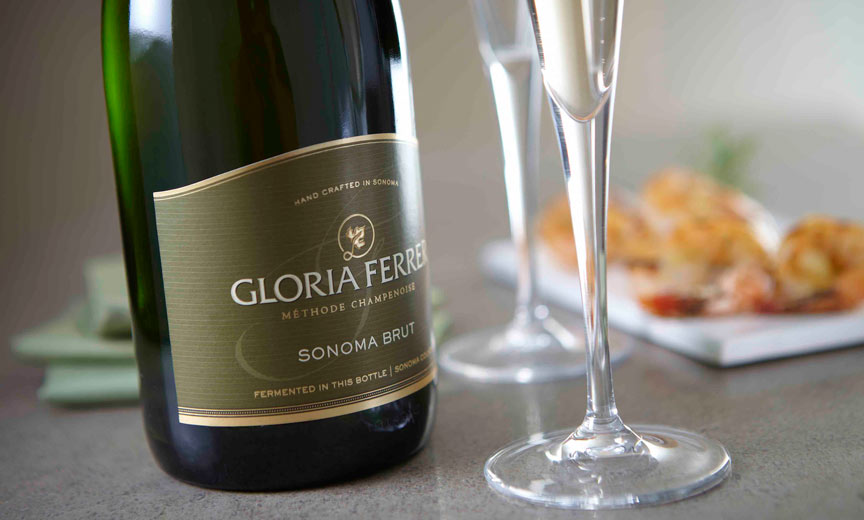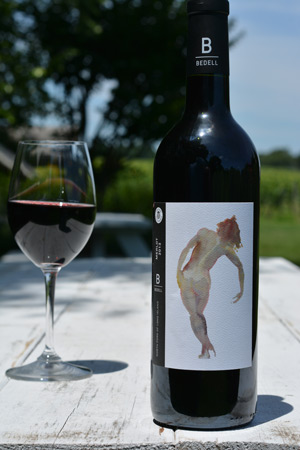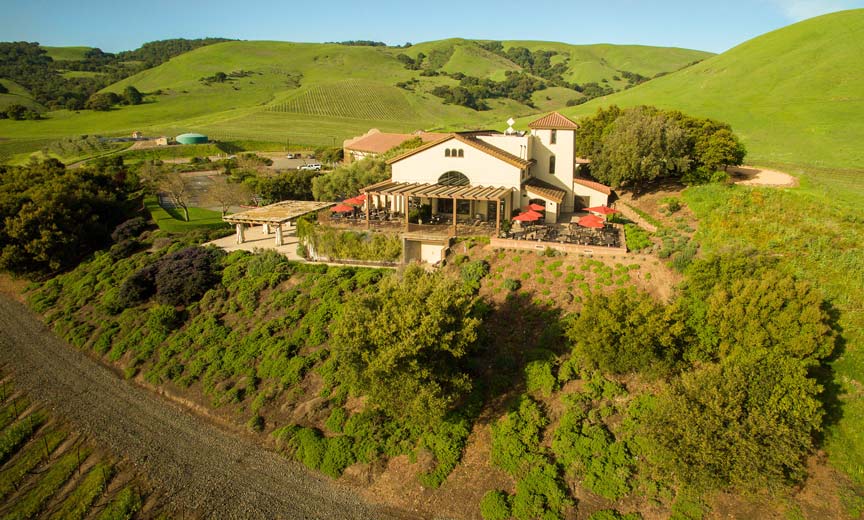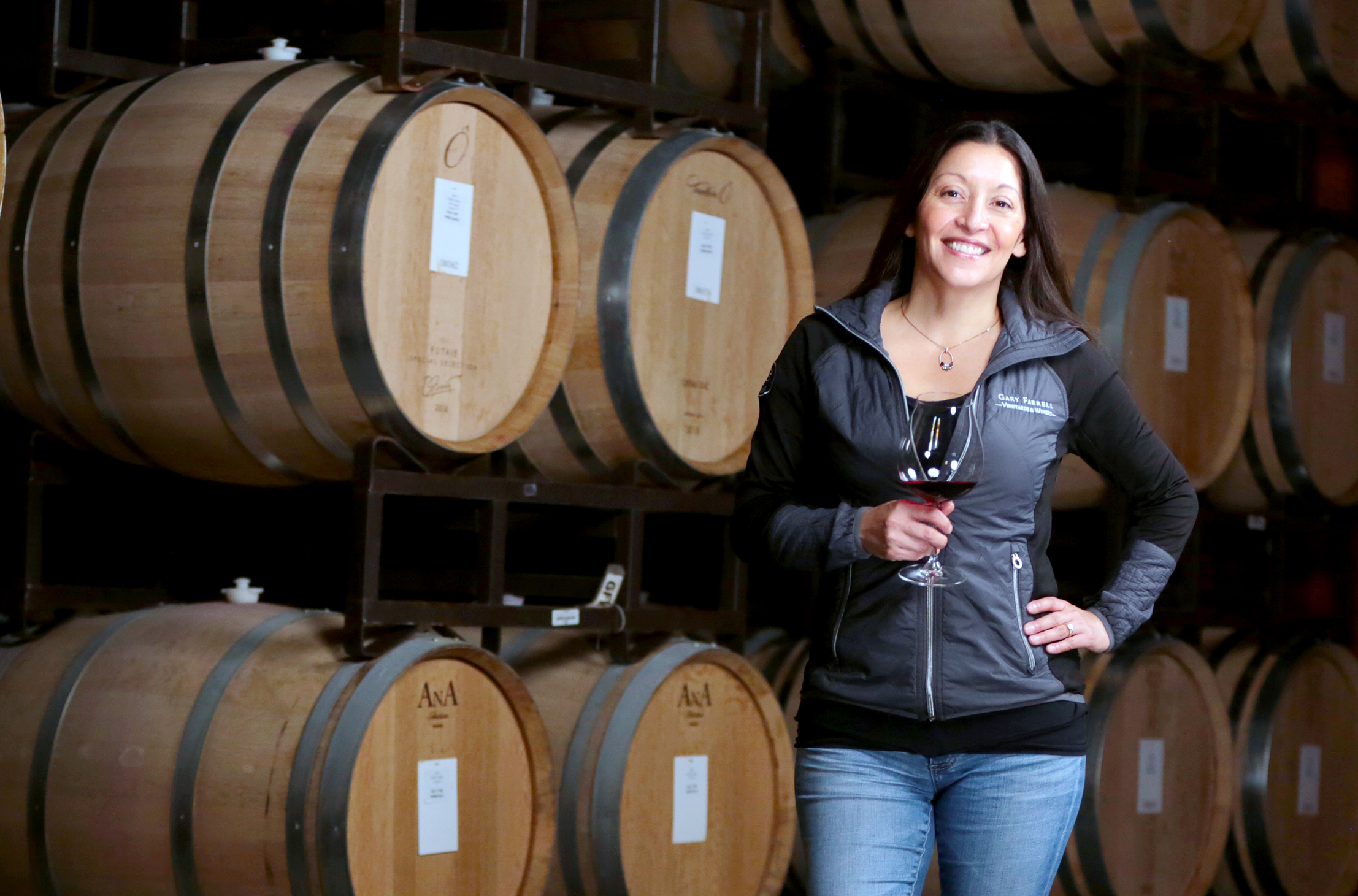Are you wine tasting properly? We asked Eva Bertran, International Ambassador for Gloria Ferrer Caves and Vineyards (gloriaferrer.com), Winemaker Richard Olsen-Harbich from Bedell Cellars (bedellcellars.com) and Katie Owen of Winc Wine Club (winc.com) for their top tips.
METROSOURCE: If you know you like one kind of wine (i.e. “I know I like spicy reds” or “I usually drink Chardonnay), what other wines might you consider trying?
“If you like sparkling wines, you would like Albariños. They share a crisp acidity,” says Bertran.
“If you like “spicy reds” I would suggest venturing further into Syrah or Malbec. An experience with Chardonnay can be more complicated – some enjoy the oaky qualities associated with some types of this wine while others prefer the non-oaked or stainless steel versions. For the oak devotees, look for other white wines fermented in oak or richer, full-bodied whites like Viognier, Roussanne and Marsanne. If you like steel fermented Chardonnay, you may also like Sauvignon Blanc or Pinot Gris,” says Olsen-Harbich.
“If you know like Pinot Noir, which is a lighter bodied red, there are plenty of other grapes to try in that category, like Gamay, Blaufrankisch and Grenache is also often made in a light bodied style as well. If you like full-bodied whites but aren’t a big fan of the oaky or buttery flavors that it can have, try other aromatic whites like Viognier, Roussanne, or Marsanne. If you like crisp whites like Sauvignon Blanc, try Chenin Blanc! It’s a lesser known varietal that is gorgeous with some floral notes, often with the same crisp-factor as Sauvignon Blanc with a little added texture. If you’re a red wine drinker, not much into whites but willing to explore, try skin-contact whites (orange wines!) These whites can often drink like reds, since they have more body and tannin than the average white,” says Owen.
METROSOURCE: Can you offer any practical tips on wine tasting — how long should one appreciate the bouquet before sipping, and how many sips should one have to appreciate the flavor?
“You cannot go wrong by the swirl, sniff and sip method. First, swirl the wine to infuse air into the glass and release the aromas. Then, smell all the wines without tasting them. Inhale the aromas in short sniffs like a dog might do, to get the most aromas. Then take in a long sniff to see which aromas dominate. Afterward go through the wines by smelling again, and then taking a sip. Let the wine sit in your mouth and think of the flavors that hit you first and which ones open up later. After taking a small sip or spitting, consider if the flavors linger in your mouth– does it have a pleasant finish, and does it make you want to have more?” says Bertran.
“Never pour wine directly into a glass without smelling the empty glass first. I like to ‘condition’ my glasses before tasting – just swirl a little wine around in the glass and dump it out. Clean glasses that have been sitting on a shelf may not be totally odor free. Some soap and even some furniture smells can invade an empty glass, affecting a wine’s aromas and flavors before you even have a chance to evaluate it.

Photo Courtesy Gloria Ferrer
Swirl a wine around in your glass before smelling it. It’s not just a pretentious trick – it actually allows a wine to open up and express more aromatics. It’s also helpful to many wines that need some air to be fully appreciated. Opening up a bottle and leaving it on the table doesn’t do it – swirling it around in your glass does.
Use your all of your senses – look at the wine’s clarity and color. Put your nose deep in the glass and take in the aroma. Is it the color you’d expect the particular wine to have? Is it clear? Is it supposed to have carbonation? Does it have an off odor that is unpleasant to you? Your own opinion is all that matters.
Read Next | This Is How Your Design Aesthetic Evolves
Think of the inside of your mouth as a globe – the areas around the sides of the globe sense acid, the part below, sweetness and the top of the globe (and the front of the gums) tannin. Once a little bit of wine is in your mouth, slosh it around and try to get it in contact with every part of the ‘globe.’ Many tasters like to pull a little air into their mouth while doing this, making a slurping sound similar to pulling on straw at the completion of a drink. Once you do this, spit it out and you’ll be able to determine everything you need to know,” says Olsen-Harbich.
“First of all, don’t be afraid to really stick your nose in the glass. It’s the right way to do it, and the best way to really take in the bouquet. After you check out the color and swirl the glass a little, just put your nose right into it, don’t be shy! Two or three sips should do it. Often, the first taste can be skewed by what you just ate or drank, so let that first sip kind of recalibrate you. Then take another sip or two to really think about how the wine is affecting your palate, where you feel it on the palate and what it tastes like,” says Owen.
METROSOURCE: Are there any on-the-rise wine-producing regions or unusual varietals you’d recommend to adventurous wine tasters?
“There are always new kids on the block as far as regions (or rediscovered areas), modern winemaking techniques using traditional grapes, etcetera. It’s a never-ending quest for adventurous wine tasters, which is what makes it fascinating. We have done extensive studies of Pinot Noir clones at Gloria Ferrer, both those used in sparkling and still winemaking. I am intrigued by the wide spectrum of flavors and aromas they can have and that is a never-ending source of study for me as Pinot Noir is made in many regions,” says Bertran.
“We have been known to encourage people to see and taste what’s happening on the North Fork of Long Island. Probably one of the lesser known grapes that does well out here is Albariño. We’ve also planted Pinot Gris and some new clones of Chardonnay. Our region is more about wine style than about varieties. Overall our combination of low alcohol, crisp acidity and saline minerality create a very unique experience for an adventurous wine drinker – especially one that has had most of their wine drinking experience shaped by the west coast. We are very different,” says Olsen-Harbich.

Bedell
“One of Winc’s GREAT features is that we introduce you to new and upcoming regions as well as interesting varietals you might have a hard time finding otherwise. I immediately think of our Field Theory Brand, which represents curious varietals from unfamiliar places. Currently on the website we have Field Theory wines from the 2016 vintage that we are made from: Albariño from Lodi and Aglianico, Touriga Nacional, and Blaufrankisch from a single vineyard called Pomar Junction in Paso Robles. The wines are outstanding, and it’s a great way to experience those off-the-wall grape varieties thriving in California wine regions. We’ve been super hot on Lodi and Santa Barbara County; they are two wine producing regions that used to be undervalued and are finally getting the praise they deserve,” says Owen.
METROSOURCE: What to share with a person who is helping you choose the wine — in terms of other likes and dislikes such as food, other beverages and fragrances?
“If I am asking a sommelier for recommendations, it’s very important to let them know what kind of food you will be eating and how many courses (will you have different wines with each course? Will it have to pair with the first and second course?). Everyone having similar dishes is easier to pair; if there are many flavors, I would ask for a sparkling wine recommendation, as it has more “pairing flexibility.” Also make the sommelier aware of any wines that you love, and the ones you can live without,” says Bertran.
“Contrary to what some people believe, the ability to taste wine is not a God-given trait inherited by a select few. If you have the ability to discern what kind of food you like to eat (which all of us do), you also have the ability to taste wine. It can be learned by anyone through practice and trusting your own tastebuds. I would trust your own taste buds over someone else’s. There is no wrong answer to your own experience,” says Olsen Harbich.
“If you already know what you like and don’t like in wine, start there and be a straight shooter. If you’re unsure about that, think about a few main categories: sweetness, acidity, body and flavors. Do you normally have a sweet tooth, or prefer tart? Do you prefer earthier flavors or berry/fruit flavors? Things like this can give this person a better idea of what your palate is like, and what you might be most accustomed to enjoying in your glass. When you sign up for Winc, you take our Palate Profile Quiz which asks these questions, and from there we recommend wines based off of your answers,” says Owen.
METROSOURCE: How many wines can you effectively enjoy at a tasting before your palate starts to lose its sensitivity? How can this be adjusted with water, cheese, chocolate, crackers, etc.?
“It depends on the type of wines. Palate fatigue can come sooner. For example if tasting big Cabernet Sauvignons, after three or four, your palate may be done. But if you are tasting sparkling wines, or delicate whites, you may be able to taste as many as five to ten,” says Bertran.
“Tasting is the process by which we use our senses to carefully evaluate wine in order to determine quality. Little goes into your mouth and even less should be swallowed.
To get the most out of any tasting experience – whether at a winery or a large event – one must learn how to comfortably spit. Spitting is an essential part of tasting wine. I know – it’s not charming and your mother probably told you not to do it – but if you want instant “street cred” as a wine connoisseur, start learning how to spit during tasting. Even so, our palette can still get fatigued and numbed from too many samplings. I usually limit the number of wines that I taste in a single sitting to no more than six to ten,” says Olsen-Harbich.
“It varies from person to person. For people who haven’t enjoyed much wine before and it’s a new thing for them, it may only take a few wines before they feel fatigue and start to think that all of the wines are tasting the same. On the contrary, a seasoned taster/drinker might be able to withstand 20-plus tastes of wine before they feel that fatigue,if spitting of course. Things like water, more neutral cheeses and smelling coffee beans can be good neutralizers for the palate and nose, but you will at some point still hit that fatigue,” says Owen.

Gloria Ferrer Vineyards
METROSOURCE: “To spit or not to spit?” that is the question.
“If you are tasting several wines, it’s always a good idea to spit. If you follow the tasting guidelines above and spit the wine after you’ve swished it around in your mouth, coating your tongue, you’re still going to get a sense of the wine. Wine tastings are the best way to discover what you like and it may change over time. Most people start out liking sweeter wines or big expressive wines. Over time, many people’s palates develop and they being to enjoy drier wines and the subtler nuances aged wines can offer. This is not much different than our food appreciation. For example, most adults palate cannot deal with the amount of candies that they ate as kids,” says Bertran.
“See above. Tasting is an exercise in perceiving subtleties; the characteristics that make one wine different from another can be extremely minor. When tasting a wine, we look at the color and clarity, smell aromas and taste for flavors. While doing this, little should actually be imbibed. This is an important point as the more wine you ingest; the less your taste buds will function properly. If you’re trying to truly taste a number of different wines, then you should be spitting. One reason people taste wine is to determine if they’d like to actually drink it. Putting wine in your mouth and not spitting it out, that’s called drinking,” says Olsen Harbich.
Read Next | 6 Awesome Sites You Should Know If Planning a Same-Sex Wedding
“It’s really up to you. If I’m tasting professionally, I always spit. Likewise, if I’m on a winery tour I spit as well just to be respectful to the winemaker or person telling me about the history of the wine. When enjoying/tasting recreationally? Well, that’s up to you. I like to gauge how much my tastes add up to. If I’m going to be doing a flight of six wines at two-ounce pours each, that is 12 ounces of wine which is two hefty glasses. So, I’m likely going to take those slow, or spit some and drink some, depending on the environment,” says Owen.
Want Metrosource LGBTQ content notifications? Sign up for MetroEspresso.

Read Next | A Behind-The-Scenes Look at the World of Show Business
Last modified: October 4, 2019











